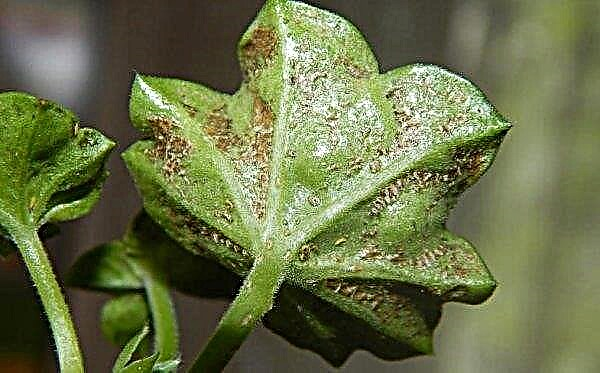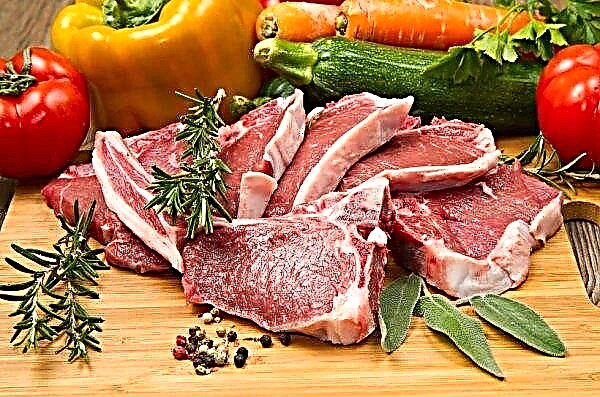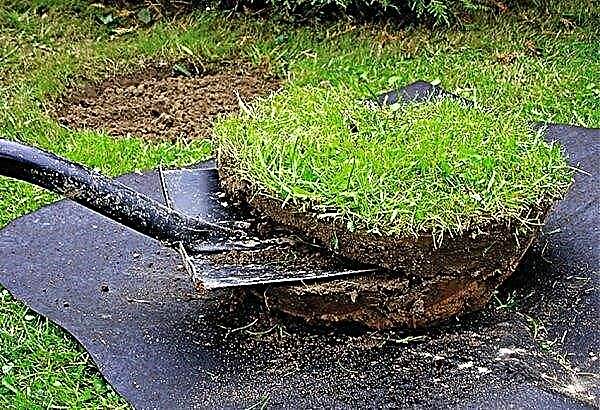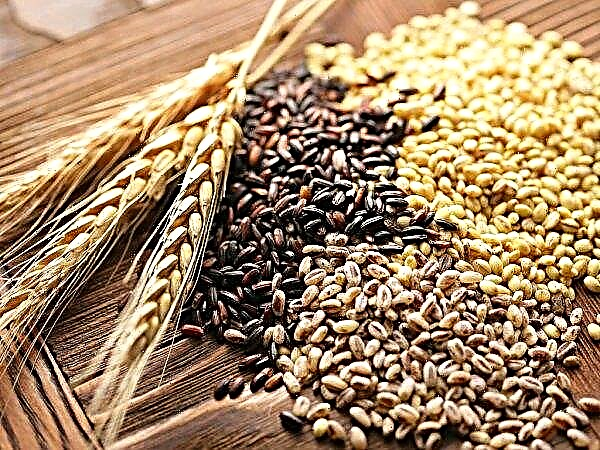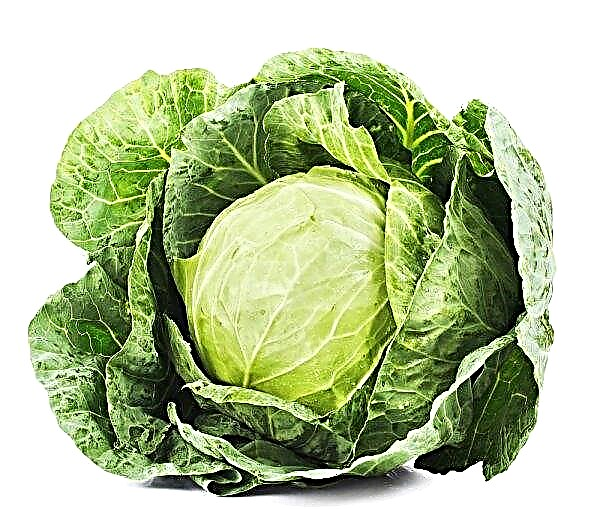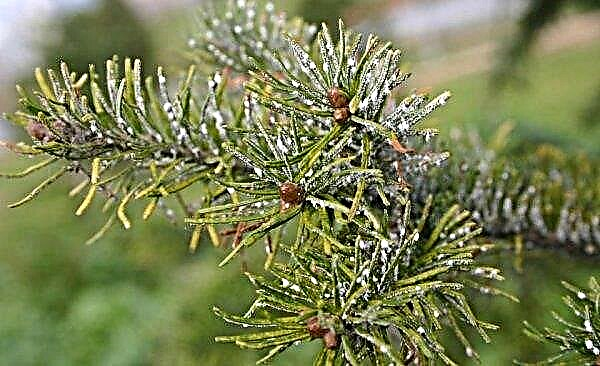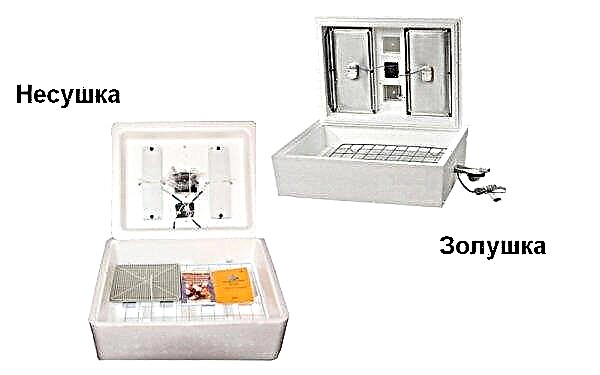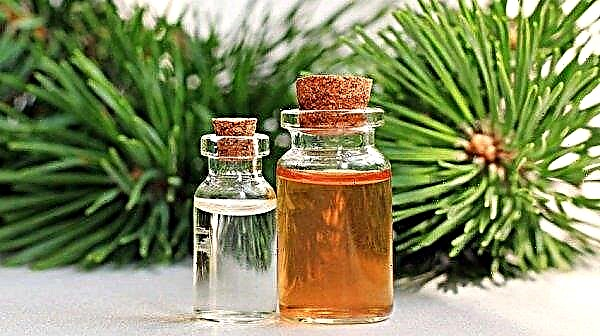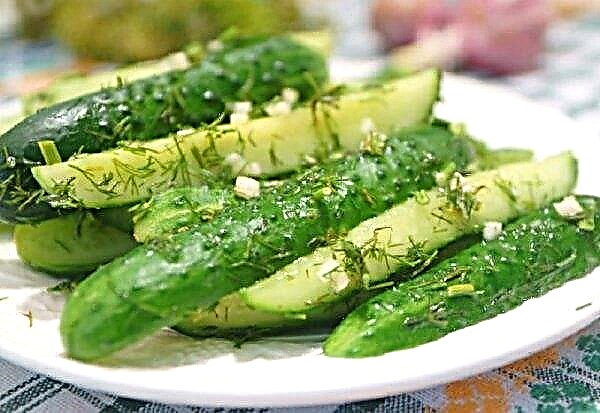There are so many diverse conifers on sale today that it is easy to get confused for an inexperienced homeowner, choosing plants to decorate his site. If the courtyard area allows you to place on it not only dwarf junipers, but also a full-grown tall tree, the owner should pay attention to a very beautiful and unpretentious Korean Christmas tree with elegant cones of blue or purple color. A detailed description of this evergreen plant, as well as tips for caring for it, are below in the review.
The name of spruce with purple cones
To be more precise, the tree in question (the Latin name is Abies koreana) is not fir, but fir. In everyday life, it can be called differently - Korean fir, Korean spruce and even Korean pine, moreover, sometimes the word "Korean" in all three variations of the name is replaced by "Chinese" or "Karelian". However, in order not to make a mistake when choosing, you need to remember that of the whole variety of names, only two are correct - Abies koreana or Korean fir.
These are synonyms, and they mean the same plant. In the Russian version, it is permissible to call the tree only Korean (in the extreme case, Chinese, due to the geographical proximity of these countries) fir. Such a strict refinement is not accidental. The fact is that among the varieties of firs and pines there are species with the name "Korean", but we are talking about completely different plants from a botanical point of view, and the cones of these trees have an ordinary brown, and not an exquisite lilac color.
So, the Latin name for Korean spruce is Picea koraiensis, Korean pine (also known as Korean or Manchu cedar or Korean cedar pine) - Pinus koraiensis. But the Karelian pine, with which, due to the consonance of the name, can also be confused with Abies koreana, is actually a species of common pine (Pinus sylvestris).
Did you know? The etymology of the Latin name of the fir - “Abies” - is rooted in the Indo-Aryan word “abh”, which can be translated as “abundance”, “abound”. Scientists suggest that this can be explained by the dense needles of the tree or its strong branching, and possibly both.
Finally, outwardly Abies koreana is very similar to another fir - Abies veitchii (Vicha fir). This tree is also very decorative and even has purple cones, but care for it is somewhat different, so confusing plants is still undesirable.
Plant description
The birthplace of Abies koreana, as the name implies, is indeed the Korean Peninsula, more precisely its southern part, as well as the adjacent island of Jeju. Under natural conditions, the tree prefers to grow on the mountain slopes, at an altitude of 1 to 1.8 km, in mixed forests. Natural neighbors are small-seeded spruce and stone birch. Since the beginning of the last century, it has been actively cultivated in Europe.
Botanical tree description:
| Dimensions | In natural conditions: height - up to 15 m, crown width - up to 3 m, trunk diameter - from 0.5 to 0.8 m. In a decorative form, it usually does not grow above 4 m, while the growth rate is very low, especially in young seedlings. |
| Crown shape | Correct, conical. |
| Bark | At a young age, light gray with a red tint and smooth, acquires a brick color as it ages, becomes covered with deep furrows and characteristic protruding exfoliations, similar to scales. |
| Shoots | As they grow, they change color from yellow to almost red, and the structure changes from weak, downy to smooth. The furrow is weak. |
| Kidney | Round, coated with a thin layer of resin. |
| Needles | Small, shiny and very thick, like a Christmas tree. The structure is initially prickly, then becomes softer. It grows almost perpendicular to the shoot. The color is dark green, on the underside of each needle there is a pair of light stripes, which allows you to recognize the species among similar conifers. The shape of the needles is curved in the shape of an arc, small notches may be present in the apical part. |
| Bumps | At a young age they have a bright purple color and a dense resin coating. They are cylindrical in shape, up to 7 cm long, with an average diameter of 2.5 cm. The arrangement is vertical, which gives the tree a resemblance to a Christmas tree decorated with candles. As it ripens, the cone does not fall, but opens directly on the tree, dropping scales and leaving a bare core. |
| Flakes | Covering - up to 0.5 cm long at the apex, taper to 0.2 cm to the base. Seeds - oval on average 1.3 × 0.4 cm in size, sitting on a short, up to 0.5 cm, leg. |
| Seeds | Wedge-shaped, brown with red tint. |
| Root system | Powerful and deep, well branched |
The appearance of cones on Korean fir begins from the age of seven, in the future they are formed every year, but in different numbers. The tree enters the phase of full fruiting starting from the age of 17, the discharge of seeds occurs in the autumn.
Did you know? Regarding the origin of the Russian word "fir", there are two versions: one at a time — the name comes from the Karelian "pihka", that is, "resin", and is associated with a high resin content in the wood, on the buds and cones of the tree, on the other - the word is borrowed from German and comes from "fichte", that is, "spruce".
Currently, breeders have bred several varieties of Korean fir, which differ from each other in size and some external features. Among the new products there are dwarf trees (for example, Diamond, Compact or Dwarf Gnome), which are suitable even for owners of small areas, and if desired, can be planted in tubs.
Of the other variations of Abies koreana, the following are worth mentioning:
- Adelba;
- Alpin is old;
- Aurea;
- Blau Zu;
- Blau Eskimo;
- Blau Piff;
- Blue Cons (Blue Cones - Blue Cones);
- Bonsai Blue;
- Brevifolia;
- Blue Standard
- Blue Magic (Blue Magic);
- Molly;
- Pikkalo;
- Silberlock;
- Silverberg

Landscape design application
Due to its compact crown, Korean fir is often used by landscape designers to decorate areas with a relatively small area. A tree looks equally good as a central element in a group composition or a single plant. In the latter case, many homeowners plant Korean fir in such a way that before the New Year and Christmas to have a real live “Christmas tree” in the courtyard, which can be decorated for the holiday right on the street without cutting down the tree.
Important! The better conditions will be created for the tree, the more decorative it will look on the site.
The only problem associated with the use of Abies koreana in landscape design is that the unpretentious tree as a whole grows very poorly in conditions of urban gas pollution, so only suburban areas where the air is relatively clean can be landscaped with it.

Growth conditions
In order for Korean fir to develop well, it needs to create suitable conditions. Fortunately, for most agricultural requirements, this coniferous tree is tolerant.
Everything you need to know before deciding whether to plant Abies koreana is shown in the table:
| Lighting | A sunny area is desirable, but partial shade is acceptable. A young seedling needs light shading to avoid burns. |
| Plot location | Open, but protected from draft and wind. Such problems are not scary for an adult tree, but it is better to save fir at the stage of formation. Elevation and slope are permissible; lowland is undesirable. |
| The soil | In general, any will do. The ideal option is abundant but uniform moisturizing, acidic or neutral reaction, high content of organic matter (humus) and sand (provides lightness and good breathability). By type of soil, sandstone or loam is best suited. |
| Drought tolerance | Low |
| Frost resistance | High. |
| Waterlogging resistance | Low |
| Minimum distance to neighboring trees | 2.5–5 m (depending on the composition - in a group, alley landing, the distance can be slightly reduced, while forming a mixboard - reduced to a minimum). |
Landing rules
Korean fir is propagated by cuttings, cuttings, seeds or budding, however, it is easiest to plant an already grown seedling in a specialized nursery for planting in a specialized nursery. The ideal age of the plant is from two to four years, such a tree is easier to tolerate a transplant than an adult or, conversely, a very small fir. Trees older than 10 years, according to generally accepted practice, are not transplanted to a new place, since they do not take root.
Important! The best time to plant a Korean fir seedling is the beginning of spring (if we talk about the middle zone of the European part of Russia, then about April), but for a tree with a closed root system, summer and autumn options are also allowed - the procedure can be carried out from late August to late September.
Experts recommend purchasing a seedling with a closed root system (in the container), then during the first years you can not worry about fertilizers, because in the "native" soil of the tree everything is already present, and in nurseries for such cases, long-acting nutrient mixtures are used.

If you have a container, the transplant process itself is more convenient to carry out: the tree is carefully removed from the container along with an earthen lump, the root system is not damaged, and the transferred stress is minimized. The size of the landing pit should be at least twice as large as the volume of the earth lump of fir.
Important! The root neck of Korean fir should remain on the surface of the earth, otherwise the tree will not take root and will rot.
The minimum dimensions are 60 cm in depth and 50 cm in diameter. At the bottom of the pit, drainage is laid in the form of crushed stone, screenings or broken brick. For alumina and other heavy types of soils, this precaution is necessary, in other cases it is desirable.

On top of the drainage, you need to pour a little fertile soil mixed with fertilizers in this composition:
- sheet soil - 2 parts;
- humus or compost - 3 parts;
- peat - 1 part;
- sand - 2 parts;
- clay - 1 part;
- sawdust - 3 parts;
- "Nitroammofoska" (complex nitrogen-phosphorus-potassium mineral fertilizer) - 250-300 g per tree.
On a layer of such a soil mixture, you need to install a seedling carefully removed from the pot, then add the substrate around the circumference of the pit with periodic tamping until all voids are eliminated. After planting, you need to water the land abundantly, wait until the water is absorbed, and mulch the trunk circle with sawdust or peat. Korean fir can also be grown from seeds. It is only important to collect them in the same region where the tree will be grown, otherwise the already low (up to 30%) germination rate drops even more.
First, seeds germinate at home, they will not grow in open ground. This is best done in wooden crates. The container is filled with the soil mixture compiled according to the above formula (the proportion of sand can be increased), after which freshly picked seeds are laid out and sprinkled with a layer of nutrient substrate with a thickness of not more than 2 cm. When the seedlings reach a height of 5 cm, picking is carried out - the plants are planted in separate pots with a diameter no more than 7 cm, in the future every year a transplant is carried out into larger flowerpots.

Thus, young firs are grown until they reach 3-5 years. In spring, the pots are transferred to the open air (for example, to the balcony) so that the tree is tempered, but in the heat they need to be hidden in the shade. Young seedlings should winter at a temperature of at least 0 ° C. Finally, when the fir reaches the age necessary for transplanting into open ground, it is planted in a permanent place according to the technology described above.
Cuttings - Another possible way to grow conifers, however, Korean fir lends itself to such a procedure very poorly, so at home it is almost impossible to root the stalk. Those who still decided to experiment, experts are advised to actively use modern rooting stimulants.

Care Features
Thorough care of Korean fir is required only during the first 2-3 years after planting, in the future the tree grows with almost no additional help.
Basic agricultural activities should be reduced to the following procedures:
- Watering. It is necessary to moisten the soil abundantly, but not very often, in order to prevent, on the one hand, stagnation of water, and on the other hand, drying out the roots due to surface and shallow watering. The frequency of the procedure depends on the initial state of the earth (the heavier the soil, the less often it needs to be watered) and current weather conditions. Irrigation can be carried out at the same time as irrigation, and it is very useful to add a little chelatine to the water - a special liquid fertilizer for conifers, from which the needles acquire a more saturated color and a healthy shine.
- Soil mulching. This technique immediately replaces two unpleasant work - loosening and weeding. In addition, properly selected mulch is a prolonged-action organic fertilizer, as it turns into pure humate as it decays. For Korean fir in this quality, coniferous litter, pine legs or peat are perfect. All these types of organics increase the acidity of the soil, which has a good effect on the development of Abies koreana, but in the case of the first two, additional enrichment of the soil with mycelia of special mushrooms occurs, creating a natural symbiosis with the root system of conifers and protecting it from various pests (this connection is called "mycorrhiza ").

- Top dressing. It is not necessary to abuse fertilizers, 1-2 procedures are enough during the season. In order not to make a mistake with the dosages, it is best to use complex mineral fertilizers for conifers. Such drugs are in the lines of many manufacturers, for example, they can be purchased under the trademarks Agricole, Yara Vila, Kemira, Gilea, Helprost, Vila Sprint, Plantafol, Master, "Biopon", "Planta", "Planton", "Green Field" and many others. other
- Pruning. Fir does not like cardinal pruning very much and after that it can recover for a very long time, which, given the already not very fast growth rate of the tree, is not very desirable. However, in spring, the plant must be freed from damaged, broken and frozen branches, that is, sanitary pruning is necessary.
- Winter preparations. Adult trees Abies koreana have high winter and frost resistance and do not need shelter for the winter. It is enough in late autumn to carry out abundant watering to prevent freezing of the root system in dry soil, and also to renew the layer of mulch. Young seedlings, especially in regions with cold, windy and snowless winters, are recommended to be protected more thoroughly - wrap with spunbond, burlap, agrotechnical fiber or paper, it is only important that the material is necessarily light, otherwise the tree will overheat and scatter in the sun.

Diseases and Pests
Abies koreana has a fairly strong immunity to diseases and pests, but sometimes, especially against the backdrop of improper care and adverse climatic conditions, problems can still arise. So, from fungal infections, the tree is most often affected by various types of rust, fusarium, and brown shute.
Did you know? Impassable fir forests, still preserved in southern Siberia and Altai, are sometimes called black or black taiga.Due to the dense arrangement of trees, sunlight does not pass through their closed crowns, therefore only mosses and some types of ferns can grow under such cover - even own fir growth does not have a chance to survive under the pressure of its “parents”.
For treatment, it is recommended to use fungicides, preferably biological, not chemical. Of the pests, the greatest danger to Abies koreana is hermes - a special kind of aphid.

In order to avoid damage, it is desirable to carry out preventive treatment with narrowly targeted insecticidal drugs, such as, for example:
- "Actellicus";
- "Aktara";
- Angio
- Confidor
- Decis Profi.
In addition to aphids, on Korean fir can also parasitize:
- spruce false shield;
- spider mite;
- fir and pine moths;
- fir leaf;
- pine cone;
- nutcracker beetle;
- black fir barbel;
- bark beetles.

With proper care, a strong tree is able to cope with such pests on its own, so all that is required from the homeowner is to provide the fir with favorable conditions for growth and development. If the problem still arises, insecticidal and acaricidal preparations are used for treatment, selected depending on the particular parasite.
Korean fir is an evergreen tree, very decorative in itself, but bright purple cones, which begin to appear in seedlings from the age of seven, give it special elegance and unusualness. Having planted such a conifer on his site, the homeowner can solve several problems - create a vivid landscape composition, solve the problem of the annual acquisition of the New Year tree and its subsequent disposal, as well as fill the yard with a pleasant and very healthy aroma of fresh needles. An additional advantage of Abies koreana is its unpretentiousness and ability to grow in almost any conditions, only slightly losing decorativeness with frankly improper care.



